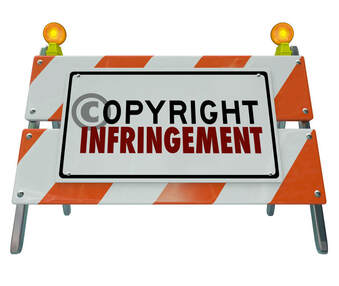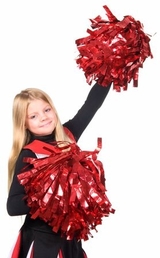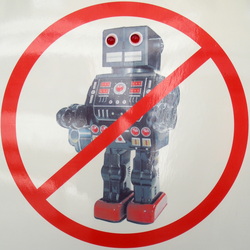
Tucked away in the CARES ACT of 2021 is a new provision of the Copyright Act, that instructs the Copyright Office to establish a Copyright Claims Board. The Claims Board will be empowered to hear claims of copyright infringement of up to $30,000. The new system, which is voluntary, provides for a much more streamlined procedure in exchange for limiting damages and attorney’s fees.
The Copyright Office has a year to implement the new tribunal. Both copyright owners and those who are frequent targets of infringement claims should begin preparing now for what may become a popular way to resolve small claims.
Need For Small Claims Tribunal
Federal courts have exclusive jurisdiction over copyright claims. With the explosion of social media, the number of claims of use of copyrighted content, particularly images, has similarly exploded. Federal courts are not well equipped to deal with such claims; the typical damages are small, while federal litigation can be complex, protracted and expensive.
A typical case involves a celebrity finding a photograph of herself at an event or restaurant and posting it to her Instagram account. Or, a business comes across a photograph of a celebrity wearing or using its product, and posts it to its website to promote the product. In both cases, the photographer then sues for copyright infringement. The Copyright Act allows statutory damages of up to $30,000 per work, or up to $150,000 per work if willful, plus attorney’s fees, so the photographer often can threaten significant damages. On the other hand, federal litigation can be involved and expensive, and fees have to be paid up front, or the case taken on contingency.
So Congress enacted the Copyright Alternative in Small-Claims Enforcement Act of 2020, which directs the Copyright Office to establish the Copyright Claims Board.
Features Of The Claims Board
The Claims Board will have several limits on what it can do:
The Claims Board does not have the power to issue an injunction, but the parties can agree that the Claims Board has the power to determine that certain infringing activities cease.
In short, the Claims Board is purely voluntary, and has much more limited powers than federal courts. It is designed to be a much quicker and less expensive way of solving small copyright disputes.
It is better to think of the Claims Board as a specialized arbitration panel, with arbitrators who have experience in copyright law. In fact, Congress encouraged referrals to the Claims Board by federal courts. Federal law requires federal courts to use alternative dispute resolution procedures for almost every case; the new law emphasizes that the Claims Board qualifies. One should expect federal judges to encourage (read pressure) litigants to avail themselves of this option.
What Should Interested Parties Be Doing To Prepare?
For copyright owners, early registration is critical. The Claims Board, like federal courts, may only hear claims where the work is registered (or where the Copyright Office has refused registration). It is not enough to have an application on file.
Furthermore, statutory damages are limited to half the permitted amount where the infringement began before registration.
So for copyright owners, registering early, and continuing to register new works, is sound policy.
For those using others’ content, especially those regularly posting content created by others to their websites or social media accounts, good policy is to review the content and its origin to ensure that one is not posting infringing content. The fact that something was posted somewhere on the internet does not make it free for the taking. A bit of due diligence now can avoid heavy damages later.
The Copyright Office has a year to implement the new tribunal. Both copyright owners and those who are frequent targets of infringement claims should begin preparing now for what may become a popular way to resolve small claims.
Need For Small Claims Tribunal
Federal courts have exclusive jurisdiction over copyright claims. With the explosion of social media, the number of claims of use of copyrighted content, particularly images, has similarly exploded. Federal courts are not well equipped to deal with such claims; the typical damages are small, while federal litigation can be complex, protracted and expensive.
A typical case involves a celebrity finding a photograph of herself at an event or restaurant and posting it to her Instagram account. Or, a business comes across a photograph of a celebrity wearing or using its product, and posts it to its website to promote the product. In both cases, the photographer then sues for copyright infringement. The Copyright Act allows statutory damages of up to $30,000 per work, or up to $150,000 per work if willful, plus attorney’s fees, so the photographer often can threaten significant damages. On the other hand, federal litigation can be involved and expensive, and fees have to be paid up front, or the case taken on contingency.
So Congress enacted the Copyright Alternative in Small-Claims Enforcement Act of 2020, which directs the Copyright Office to establish the Copyright Claims Board.
Features Of The Claims Board
The Claims Board will have several limits on what it can do:
- Voluntary – no one is required to litigate before the Claims Board. Claimants may still bring their infringement cases in federal court. And the respondents have 60 days to opt-out and have the case reviewed in federal court instead.
- Limited damages – the limits are $15,000 per work and total damages of $30,000.
- Limited Attorney’s Fees – Only for bad faith filings, and even then limited to $5,000, other than “exceptional cases.”
- No finding of willful infringement – that issue is beyond the Claims Board’s jurisdiction.
- Limited Discovery – no oral depositions. Written discovery is allowed. The Board has the discretion to hear oral testimony.
- Limited judicial review – once a decision is rendered, either party may request reconsideration and then review by the Register of Copyrights. After that, a party can seek review in federal court, but only on very limited grounds: “fraud, corruption, misrepresentation or misconduct.”
The Claims Board does not have the power to issue an injunction, but the parties can agree that the Claims Board has the power to determine that certain infringing activities cease.
In short, the Claims Board is purely voluntary, and has much more limited powers than federal courts. It is designed to be a much quicker and less expensive way of solving small copyright disputes.
It is better to think of the Claims Board as a specialized arbitration panel, with arbitrators who have experience in copyright law. In fact, Congress encouraged referrals to the Claims Board by federal courts. Federal law requires federal courts to use alternative dispute resolution procedures for almost every case; the new law emphasizes that the Claims Board qualifies. One should expect federal judges to encourage (read pressure) litigants to avail themselves of this option.
What Should Interested Parties Be Doing To Prepare?
For copyright owners, early registration is critical. The Claims Board, like federal courts, may only hear claims where the work is registered (or where the Copyright Office has refused registration). It is not enough to have an application on file.
Furthermore, statutory damages are limited to half the permitted amount where the infringement began before registration.
So for copyright owners, registering early, and continuing to register new works, is sound policy.
For those using others’ content, especially those regularly posting content created by others to their websites or social media accounts, good policy is to review the content and its origin to ensure that one is not posting infringing content. The fact that something was posted somewhere on the internet does not make it free for the taking. A bit of due diligence now can avoid heavy damages later.




